After last week’s foray into Spain, this week we move slightly further west on the Iberian Peninsula, into Portugal –to explore Port.
PORT
Fortification process – Unlike Sherry, with Port the wine is fortified during fermentation (and after a fairly short and quite vigorous period of extraction – which put simply means punching down the cap of skins to ensure tannins and colour is extracted into the red wine) Note: This is still sometimes done by the traditional method ie by foot!
At around 6% ABV and once the required amount of extraction has been achieved, Aguardente (77% proof grape spirit) is added to the wine, this kills the yeast and stops the fermentation before all the sugars have been converted to alcohol – this means the wine retains sweetness.
Grape Varieties – Both red, white and rose styles are made, I won’t go into too much detail on the indigenous grapes used for port production as few will be recognisable ie Touriga Franca, Tinta Cao, Tinta Amarela. The best known are Touriga Nacional and Tinta Roriz (where it is better known in its Spanish incarnation of Tempranillo). Port is usually made from a blend of varieties which are fermented together.
Ageing – the main processes which impact on the style of port are how long it is aged for and whether it has been wood matured or bottle matured.
As the real point of this blog is less about the technical stuff but more to explore the many different styles of Port and provide a few names to look for I will now move swiftly on!
Styles – Wood Matured Ports
As the name suggests, this refers to wines which are matured in tank (often wood but also less romantically stainless steel or concrete!) prior to bottling and are ready to drink once sold. Wine styles will vary based on how long they have been stored and in what size and type of tank.
This covers a range of Port styles: Ruby, Late Bottled Vintage (modern style), White, Pink and Tawny ports.
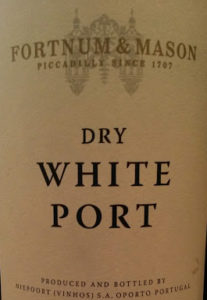 White – Unsurprisingly these are made from indigenous white varieties! Usually aged in stainless steel for a couple of years although some are aged longer. Note: if wood aged these will become nuttier and be more golden in colour. These wines come in both dry and sweet styles: A good example of a dry version is Taylor’s Chip Dry available from Waitrose. If you see the term ‘Lagrima’ on the label it means it’s the sweet style. .
White – Unsurprisingly these are made from indigenous white varieties! Usually aged in stainless steel for a couple of years although some are aged longer. Note: if wood aged these will become nuttier and be more golden in colour. These wines come in both dry and sweet styles: A good example of a dry version is Taylor’s Chip Dry available from Waitrose. If you see the term ‘Lagrima’ on the label it means it’s the sweet style. .
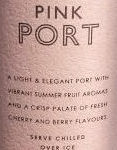 Pink – Quite a modern phenomenon introduced by Croft in 2008 I suspect to cash in on the popularity of Rosé wines and unashamedly aimed at the female market as a summer sipper over ice or in a cocktail. Sweet, fruity and aromatic.
Pink – Quite a modern phenomenon introduced by Croft in 2008 I suspect to cash in on the popularity of Rosé wines and unashamedly aimed at the female market as a summer sipper over ice or in a cocktail. Sweet, fruity and aromatic.
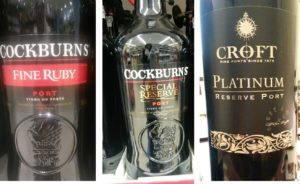 Ruby – Several styles exist encompassing thebasic wine (Ruby) through to more premium wines (which can be called Reserve or Premium, you may even see the term Finest). Generally Ruby wines are as their name suggests deep ruby in colour and quite fiery in alcohol and flavour – there is nothing mellow with these wines, they are fresh with lots of vibrant red fruit – the most intensely fruity of the Ports. These tend to be aged in large tanks for less than 3 years. Where you see terms Reserve, Premium, Special, Finest these denote better quality Rubies which tend to use better quality grapes and undergo longer ageing so the wines whilst still fresh and fruity have more complexity.
Ruby – Several styles exist encompassing thebasic wine (Ruby) through to more premium wines (which can be called Reserve or Premium, you may even see the term Finest). Generally Ruby wines are as their name suggests deep ruby in colour and quite fiery in alcohol and flavour – there is nothing mellow with these wines, they are fresh with lots of vibrant red fruit – the most intensely fruity of the Ports. These tend to be aged in large tanks for less than 3 years. Where you see terms Reserve, Premium, Special, Finest these denote better quality Rubies which tend to use better quality grapes and undergo longer ageing so the wines whilst still fresh and fruity have more complexity.
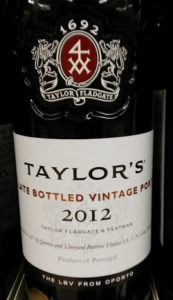 Late Bottled Vintage – unless it says unfiltered, these will be modern LBVs which mean they are filtered and fined so are ready to drink immediately. These wines are from a single year (vintage) but are not ‘designated’ vintages ie years’ when Port “declares” a particularly good vintage. The year of harvest is given on the bottle. These wines are aged for between 4 and 6 years in large tanks. These ports have more finesse and character from longer ageing than Ruby ports, are deeper purple in colour and have an aroma/flavour profile of both black fruits and dried fruit: raisin, fig, prune with notes of vanilla. This category can offer very good value.
Late Bottled Vintage – unless it says unfiltered, these will be modern LBVs which mean they are filtered and fined so are ready to drink immediately. These wines are from a single year (vintage) but are not ‘designated’ vintages ie years’ when Port “declares” a particularly good vintage. The year of harvest is given on the bottle. These wines are aged for between 4 and 6 years in large tanks. These ports have more finesse and character from longer ageing than Ruby ports, are deeper purple in colour and have an aroma/flavour profile of both black fruits and dried fruit: raisin, fig, prune with notes of vanilla. This category can offer very good value.
Tawny – my favourite category! This style of Port undergoes oxidative ageing as they are stored in wood pipes (smaller than barrels used for other ports) for longer than any other style of port – which as I explained in the previous blog, means that the wines undergo a substantial colour transformation as slow exposure to oxygen turns these wines a more tawny-brown colour. This oxidation and ageing also impacts on the flavour profile and there are more tertiary less primary characteristics: think nuts, toffee, raisin, marmalade and sweet spice rather than juicy fruit.
There are a number of different styles of port from the basic Tawny (often blends of red and white port stored in bulk and fined to reduce colour), Reserve Tawny (better quality grape, longer ageing) through to the Aged Tawny’s which are my personal favourites.
Aged Tawnies are (nearly) always blend, so any years’ shown are averages of the blends used to make up the wine, it’s also worth noting that a bottling date should be shown on the label – these wines are best drunk relatively soon after bottling date as they won’t improve with further ageing in bottle.
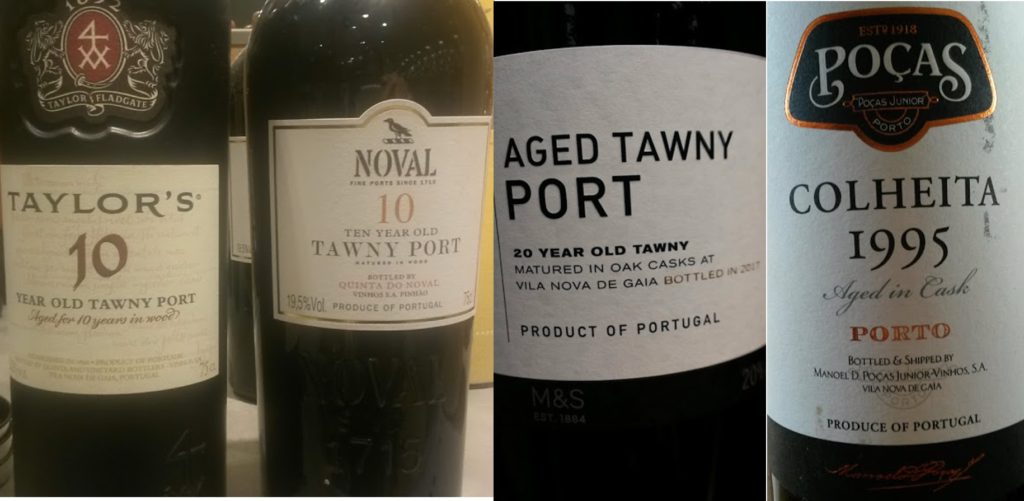
♦ 10 Year Old – retain a reddish tinge, with dried fruit aromas/flavours
♦ 20 Year Old – nutty, higher sweetness than 10 YO, more tawny colour
♦ 30 Year Old – coffee, raisin notes. Increased sweetness again. Pale mahogany colour
♦ 40 Year Old – tawny/mahogany with a slightly green tinge. Flavour/aromas of caramel, nuts, coffee, burnt toast, marmalade. In short really complex and very sweet!
There is also one rather special category – known as Colheita which is a Vintage Tawny ie from grapes from one year, aged in small oak barrels for a minimum of 7 years (often much longer). These wines have obvious oxidative characteristics (appearance and on the nose – marmalade, dried fruits, coffee etc) and are very sweet.
Moving on to Bottle Matured Ports
These wines are aged for a short time prior to bottling but undergo most of their ageing in the bottle, so will age reductively (ie without the influence of oxygen) which retains more fruit. They can be cellared prior to opening. Bottling dates as well as (where appropriate) Vintage dates will be shown on the bottle.
This category covers Vintage, Single Quinta, Crusted and LBV (unfiltered)
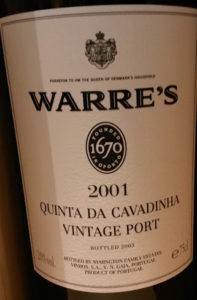 Vintage – only from ‘declared’ vintages which are years’ the shippers believe are exceptional for Port. (As a rule of thumb usually 3 a decade – note 2011 is widely seen as a great year). Aged in tank for a maximum of 2 years, these wines are bottled without fining and age for substantial periods in the bottle. Deep Ruby colour, very tannic particularly when young, sweet with lots of black fruit aromas/flavour, dark chocolate, smoky. Generally these wines need a lot of time to evolve, drunk too young they can austere and mouth numbingly tannic but it depends on your preference when you want to drink them.
Vintage – only from ‘declared’ vintages which are years’ the shippers believe are exceptional for Port. (As a rule of thumb usually 3 a decade – note 2011 is widely seen as a great year). Aged in tank for a maximum of 2 years, these wines are bottled without fining and age for substantial periods in the bottle. Deep Ruby colour, very tannic particularly when young, sweet with lots of black fruit aromas/flavour, dark chocolate, smoky. Generally these wines need a lot of time to evolve, drunk too young they can austere and mouth numbingly tannic but it depends on your preference when you want to drink them.
Single Quinta – these are essentially style of Vintage port in that they are from single vintages – but usually not ‘declared’ vintages. They are also the product of grapes from one estate. Stylistically though they are very similar ie 2-3 years ageing in cask before bottling without fining and they are likely to mature sooner than vintage ports.
Crusted – Also similar in style to Vintage in that the wines are not filtered and are bottled young –they also throw a deposit hence the name. The main difference with these ports are that they are from a blend of 2 or 3 vintages not a single vintage. Stored in bottle for at least 3 years prior to release and can be drunk immediately.
Late Bottled Vintage (Unfiltered) – exactly as per the LBV wines discussed earlier with one exception – there is no filtering prior to bottling. These wines therefore have greater structure and a bigger body and are able to be kept longer in bottle prior to drinking, oh and they also need decanting! Note: Some can also be sold as “bottle matured”.
Another term you may see but is pretty rare is Garrafeira – only one producer makes this style: Niepoort. These ports are from a single vintage, are aged initially in wood (up to 6 years) then transferred to glass demijohns where ageing continues for many more years (minimum 8) resulting in a port with elements of both reductive and oxidative ageing. Very complex… and hard to find!
I know there is a lot to take in but hopefully you can pick and choose the bits that interest you and come Christmas Day you will be armed and ready to go with your favourite choice of port to enjoy.
I will leave you with a few tips:
♦ Serving suggestions – Ports to chill: White, Rose, and Tawny. Ports to serve at room temperature: Ruby, LBVs and all the Bottle matured Ports ie Vintage, Single Quinta etc.
♦ How long to keep once opened? – Most White and Rose ports will last in the fridge after opening for a few weeks. LBV (modern) and Ruby will also last a couple of weeks. Tawnies will last in the fridge a bit longer (up to a month). Bottle matured ports should be drunk within 2-3 days (max) after decanting. As a rule of thumb, the older the port, the less stable it will be so the sooner it should be drunk after opening.
♦ If your bottle of port is bottled with a stopper cork (ie no corkscrew is needed) these can be drunk without the need for decanting as they will have been fined and filtered prior to bottling.
♦ If your bottle of port has a driven cork (ie needs a corkscrew!) these wines WILL need to be decanted as they are likely to throw varying degrees of sediment so unless you want the last dregs to resemble a mouthful of dark and very bitter coffee grounds, remember to decant it!
♦ Quality producers to look for include: Taylors, Sandeman, Symington, Warre, Quinta do Noval, Ferreira, Niepoort, Fonseca, Kopke and Graham. Cockburn and Croft are more readily available names on the High Street.
♦ Port can vary considerably in price as well as style, so if you are looking for value for money then a 20 Year Old Tawny (as opposed to a 40 YO) or a less ‘fashionable’ vintage style ie Crusted or Single Quinta Ports are well worth considering.
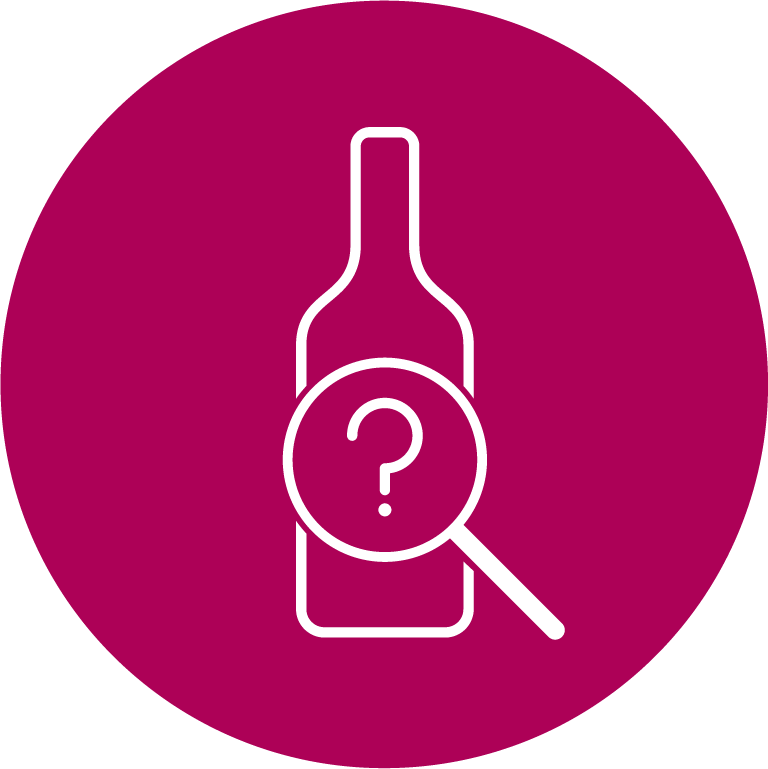
I’ve been stuck on Taylor-Fladgate 20 year and I love it! Your thoughts? Any type that’s better that I should try?
You can’t go too far wrong with Taylor-Fladgate! You could try Wiese and Krohn – they have been bought by Taylor Fladgate and are mature tawny specialists. I also enjoy Colheita – vintage tawnies, many are less than 20 years old but some are close to that maturation period – Kopke is a good brand to try.